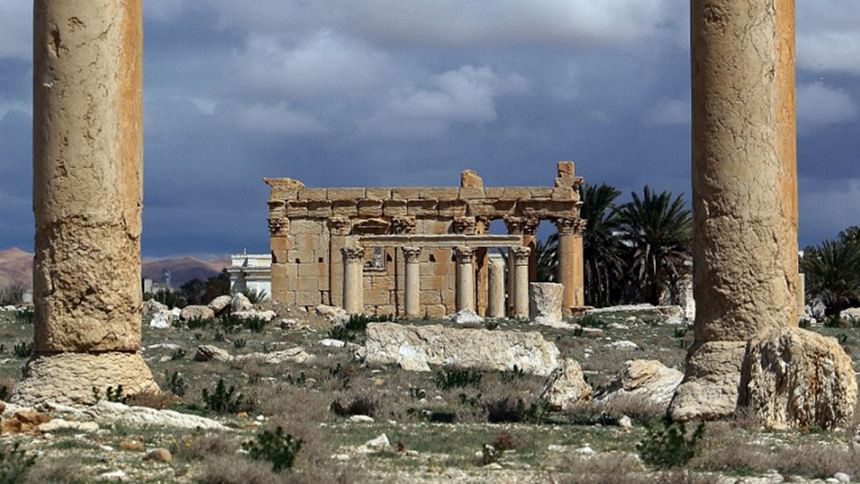IS causes 'severe damage' to Palmyra's Temple of Bel

The Islamic State (IS) militant group has destroyed part of another temple at the ancient Syrian site of Palmyra, activists and witnesses say.
The extent of the damage to the Temple of Bel is not clear but residents have described a large explosion.
A week ago IS published images of what appeared to be the destruction of another part of the site, the Temple of Baalshamin.
IS seized control of Palmyra in May, sparking fears for the site.
"It is total destruction,'' one Palmyra resident told the Associated Press news agency. "The bricks and columns are on the ground."
"It was an explosion the deaf would hear," he went on, adding that only the wall of the temple remains.
The temple was dedicated to the Palmyrene gods and was one of the best preserved parts of the site.
Unesco World Heritage site
--Site contains monumental ruins of great city, once one of the most important cultural centres of the ancient world
--Art and architecture, from the 1st and 2nd Centuries, combine Greco-Roman techniques with local traditions and Persian influences
--Site boasts a number of monumental projects, more than 1,000 columns, and a formidable necropolis of more than 500 tombs
--More than 150,000 tourists visited Palmyra every year before the Syrian conflict
The modern city of Palmyra - known locally as Tadmur - is situated in a strategically important area on the road between the Syrian capital, Damascus, and the eastern city of Deir al-Zour.
The ancient city was a major cultural centres and is a Unesco World Heritage site.Unesco has condemned the deliberate destruction of Syria's cultural heritage as a war crime.
IS has ransacked and demolished several similar sites that predate Islam in Iraq, seeing them as symbols of "idolatry".
As well as destroying parts of the ruins at Palmyra, IS has used the site's theatre to stage the public execution by children of more than 20 captured Syrian army soldiers.

 For all latest news, follow The Daily Star's Google News channel.
For all latest news, follow The Daily Star's Google News channel. 



Comments